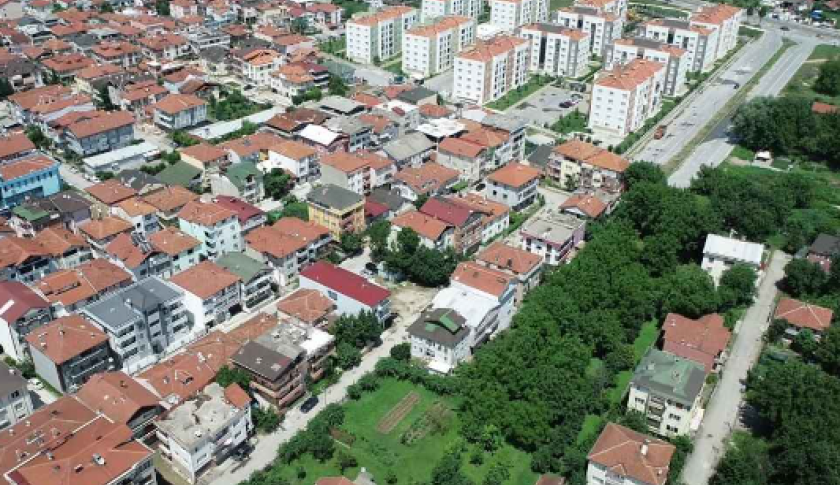Structural Reinforcement and Innovative Approaches in Urban Transformation Projects
In recent years, the increasing earthquake risks and rapid urbanization across Turkey have made urban transformation projects more significant. Urban transformation is a process aimed at renewing old buildings and creating safer, modern living spaces. However, this process does not only involve demolition and reconstruction; strengthening existing structures also plays a critical role. Structural reinforcement and innovative approaches are key to creating long-lasting, durable, and safe buildings in urban transformation projects.
The Importance of Structural Reinforcement
In urban transformation projects, structural reinforcement is carried out to enhance the earthquake resistance of existing buildings and prolong their lifespan. Especially in large cities, old buildings may not meet today’s building standards. Instead of demolishing these buildings and rebuilding them from scratch, structural reinforcement methods can provide more economical and environmentally friendly solutions. These reinforcement processes aim to increase the earthquake resistance of buildings by intervening in the load-bearing systems.
Structural reinforcement applications can be carried out on various parts of the building, from the foundation to the roof. Commonly used methods include strengthening columns and beams, supporting walls, soil improvement, and solidifying building foundations. These interventions increase the safety of buildings while also extending their service life.
Innovative Approaches in Urban Transformation
In urban transformation projects, structural reinforcement alone is not enough. Additionally, innovative approaches should be used to construct modern, environmentally friendly, and sustainable buildings. Some innovative approaches that can be employed in this process include:
- Green Building Technologies
In urban transformation projects, constructing environmentally friendly buildings provides a significant advantage in terms of sustainability. Green building technologies allow the creation of energy-efficient, low carbon emission, and environmentally conscious structures. These buildings incorporate environmentally friendly applications such as solar panels, rainwater harvesting systems, and insulation technologies. As a result, energy costs are reduced, and the negative impact on the environment is minimized.
- Smart Building Systems
With the advancement of technology, the use of smart building systems in urban transformation projects has increased. Smart buildings are structures where systems such as energy management, security, heating, and cooling can be controlled automatically. These systems increase the energy efficiency of buildings while also enhancing comfort levels. Smart building technologies not only improve the quality of life for users but also ensure that the structures are more sustainable in the long term.
- Innovative Construction Materials
The construction materials used in urban transformation projects are of great importance in terms of the durability and energy efficiency of buildings. New-generation construction materials stand out with their lighter weight and greater strength. For instance, carbon fiber-reinforced concrete and composite materials strengthen the load-bearing systems of buildings while offering environmentally friendly solutions by using less material. Additionally, these materials make buildings more resistant to natural disasters like earthquakes.
- Earthquake-Resistant Building Technologies
One of the main goals of urban transformation projects is to build earthquake-resistant structures. Earthquake-resistant technologies prevent buildings from suffering significant damage during an earthquake, minimizing the risk of loss of life. For example, seismic isolators and flexible structural systems allow buildings to move flexibly during an earthquake, reducing the risk of collapse. This technology is one of the most effective methods used, particularly in earthquake-prone areas.
The Structural Reinforcement Process in Urban Transformation
The process of structural reinforcement in urban transformation projects consists of several steps. First, a structural analysis of the existing building is conducted, and its earthquake resistance is assessed. Based on this evaluation, the need for reinforcement is determined. Then, a structural reinforcement plan is created by expert engineers. Within this plan, interventions such as strengthening columns and beams, adding new load-bearing elements, and other structural improvements are carried out.
Finally, after the reinforcement process is completed, the building is re-evaluated to check if it is safe against earthquakes. These stages highlight the importance of structural reinforcement in urban transformation projects and show that this process must be carried out meticulously.
In urban transformation projects, structural reinforcement and innovative approaches are the key to creating safe, modern, and sustainable living spaces. Strengthening old buildings is one of the most effective measures against earthquake risks. Additionally, solutions such as green building technologies, smart building systems, and innovative construction materials make urban transformation projects more environmentally friendly and long-lasting. The use of these methods plays a crucial role in the process of building future cities.
